6.8: Political Participation and the Voting Process
- Page ID
- 5875
\( \newcommand{\vecs}[1]{\overset { \scriptstyle \rightharpoonup} {\mathbf{#1}} } \)
\( \newcommand{\vecd}[1]{\overset{-\!-\!\rightharpoonup}{\vphantom{a}\smash {#1}}} \)
\( \newcommand{\id}{\mathrm{id}}\) \( \newcommand{\Span}{\mathrm{span}}\)
( \newcommand{\kernel}{\mathrm{null}\,}\) \( \newcommand{\range}{\mathrm{range}\,}\)
\( \newcommand{\RealPart}{\mathrm{Re}}\) \( \newcommand{\ImaginaryPart}{\mathrm{Im}}\)
\( \newcommand{\Argument}{\mathrm{Arg}}\) \( \newcommand{\norm}[1]{\| #1 \|}\)
\( \newcommand{\inner}[2]{\langle #1, #2 \rangle}\)
\( \newcommand{\Span}{\mathrm{span}}\)
\( \newcommand{\id}{\mathrm{id}}\)
\( \newcommand{\Span}{\mathrm{span}}\)
\( \newcommand{\kernel}{\mathrm{null}\,}\)
\( \newcommand{\range}{\mathrm{range}\,}\)
\( \newcommand{\RealPart}{\mathrm{Re}}\)
\( \newcommand{\ImaginaryPart}{\mathrm{Im}}\)
\( \newcommand{\Argument}{\mathrm{Arg}}\)
\( \newcommand{\norm}[1]{\| #1 \|}\)
\( \newcommand{\inner}[2]{\langle #1, #2 \rangle}\)
\( \newcommand{\Span}{\mathrm{span}}\) \( \newcommand{\AA}{\unicode[.8,0]{x212B}}\)
\( \newcommand{\vectorA}[1]{\vec{#1}} % arrow\)
\( \newcommand{\vectorAt}[1]{\vec{\text{#1}}} % arrow\)
\( \newcommand{\vectorB}[1]{\overset { \scriptstyle \rightharpoonup} {\mathbf{#1}} } \)
\( \newcommand{\vectorC}[1]{\textbf{#1}} \)
\( \newcommand{\vectorD}[1]{\overrightarrow{#1}} \)
\( \newcommand{\vectorDt}[1]{\overrightarrow{\text{#1}}} \)
\( \newcommand{\vectE}[1]{\overset{-\!-\!\rightharpoonup}{\vphantom{a}\smash{\mathbf {#1}}}} \)
\( \newcommand{\vecs}[1]{\overset { \scriptstyle \rightharpoonup} {\mathbf{#1}} } \)
\( \newcommand{\vecd}[1]{\overset{-\!-\!\rightharpoonup}{\vphantom{a}\smash {#1}}} \)
\(\newcommand{\avec}{\mathbf a}\) \(\newcommand{\bvec}{\mathbf b}\) \(\newcommand{\cvec}{\mathbf c}\) \(\newcommand{\dvec}{\mathbf d}\) \(\newcommand{\dtil}{\widetilde{\mathbf d}}\) \(\newcommand{\evec}{\mathbf e}\) \(\newcommand{\fvec}{\mathbf f}\) \(\newcommand{\nvec}{\mathbf n}\) \(\newcommand{\pvec}{\mathbf p}\) \(\newcommand{\qvec}{\mathbf q}\) \(\newcommand{\svec}{\mathbf s}\) \(\newcommand{\tvec}{\mathbf t}\) \(\newcommand{\uvec}{\mathbf u}\) \(\newcommand{\vvec}{\mathbf v}\) \(\newcommand{\wvec}{\mathbf w}\) \(\newcommand{\xvec}{\mathbf x}\) \(\newcommand{\yvec}{\mathbf y}\) \(\newcommand{\zvec}{\mathbf z}\) \(\newcommand{\rvec}{\mathbf r}\) \(\newcommand{\mvec}{\mathbf m}\) \(\newcommand{\zerovec}{\mathbf 0}\) \(\newcommand{\onevec}{\mathbf 1}\) \(\newcommand{\real}{\mathbb R}\) \(\newcommand{\twovec}[2]{\left[\begin{array}{r}#1 \\ #2 \end{array}\right]}\) \(\newcommand{\ctwovec}[2]{\left[\begin{array}{c}#1 \\ #2 \end{array}\right]}\) \(\newcommand{\threevec}[3]{\left[\begin{array}{r}#1 \\ #2 \\ #3 \end{array}\right]}\) \(\newcommand{\cthreevec}[3]{\left[\begin{array}{c}#1 \\ #2 \\ #3 \end{array}\right]}\) \(\newcommand{\fourvec}[4]{\left[\begin{array}{r}#1 \\ #2 \\ #3 \\ #4 \end{array}\right]}\) \(\newcommand{\cfourvec}[4]{\left[\begin{array}{c}#1 \\ #2 \\ #3 \\ #4 \end{array}\right]}\) \(\newcommand{\fivevec}[5]{\left[\begin{array}{r}#1 \\ #2 \\ #3 \\ #4 \\ #5 \\ \end{array}\right]}\) \(\newcommand{\cfivevec}[5]{\left[\begin{array}{c}#1 \\ #2 \\ #3 \\ #4 \\ #5 \\ \end{array}\right]}\) \(\newcommand{\mattwo}[4]{\left[\begin{array}{rr}#1 \amp #2 \\ #3 \amp #4 \\ \end{array}\right]}\) \(\newcommand{\laspan}[1]{\text{Span}\{#1\}}\) \(\newcommand{\bcal}{\cal B}\) \(\newcommand{\ccal}{\cal C}\) \(\newcommand{\scal}{\cal S}\) \(\newcommand{\wcal}{\cal W}\) \(\newcommand{\ecal}{\cal E}\) \(\newcommand{\coords}[2]{\left\{#1\right\}_{#2}}\) \(\newcommand{\gray}[1]{\color{gray}{#1}}\) \(\newcommand{\lgray}[1]{\color{lightgray}{#1}}\) \(\newcommand{\rank}{\operatorname{rank}}\) \(\newcommand{\row}{\text{Row}}\) \(\newcommand{\col}{\text{Col}}\) \(\renewcommand{\row}{\text{Row}}\) \(\newcommand{\nul}{\text{Nul}}\) \(\newcommand{\var}{\text{Var}}\) \(\newcommand{\corr}{\text{corr}}\) \(\newcommand{\len}[1]{\left|#1\right|}\) \(\newcommand{\bbar}{\overline{\bvec}}\) \(\newcommand{\bhat}{\widehat{\bvec}}\) \(\newcommand{\bperp}{\bvec^\perp}\) \(\newcommand{\xhat}{\widehat{\xvec}}\) \(\newcommand{\vhat}{\widehat{\vvec}}\) \(\newcommand{\uhat}{\widehat{\uvec}}\) \(\newcommand{\what}{\widehat{\wvec}}\) \(\newcommand{\Sighat}{\widehat{\Sigma}}\) \(\newcommand{\lt}{<}\) \(\newcommand{\gt}{>}\) \(\newcommand{\amp}{&}\) \(\definecolor{fillinmathshade}{gray}{0.9}\)The cornerstone of democracy rests on the foundation of an educated electorate.
Thomas Jefferson
Jefferson's quote has been used many times by politicos, educators and candidates alike to explain how the founding fathers felt about the civic duty we call voting. While voting is the most important civic liberty a citizen can exercise in this nation, it is also a solemn act of civic responsibility and should be exercised with care and caution. This would seem to be the overall attitude of the founding fathers as they established the systems and practices by which we exercise our right to vote. In this section, we will look at the mechanical processes voters use to make their choices about the future leadership of our nation clear on Election Day.
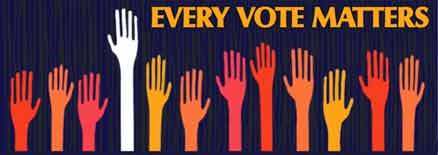
Voting is the most important civic responsibility entrusted to the American citizen. While not all of us take advantage of the right to run for office or to otherwise become politically engaged, it is essential that every eligible citizen register and participate in the voting process. Exercising the right to vote is critical in making sure that our elected officials are truly representative of the greatest possible number of citizens.
Candidates who win elections feel a sense of responsibility and accountability to those who participate and are active in the voting process. But they often find that only specific groups of citizens are actively engaged in the voting process and they tend to orient themselves and their policies to those groups. Groups who have lower levels of voting participation and engagement tend to feel disassociated from elected officials and often feel a sense of apathy, distrust, or a feeling of ineffective influence.
Video: Why People Don't Vote
When Do We Vote?
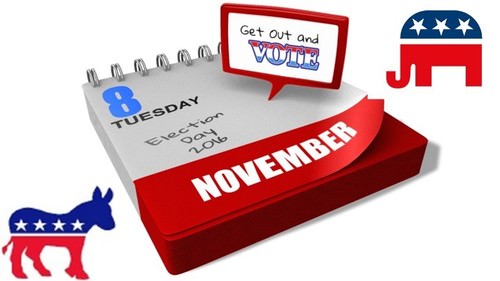
Dates and times for voting are determined by federal and state law and the voting process is the responsibility of each individual state.
Federal general elections are generally held on the first Tuesday following the first Monday in November in even numbered years. Every four years the general election will include the presidential ticket while Congressional elections are held every two years and senators run every six years in staggered terms (meaning only one-third of the Senate is up for election every two years). What this means to you is that every November in even-numbered years, you will have the opportunity to participate in a national election to choose members of Congress while every four years you will have the ability to participate in the presidential election. Remember, you are not really choosing the presidential ticket directly – you are merely selecting which of the candidates will receive the Electoral College votes in your state.
State and local elections are the responsibility of each state as well as a variety of county and local level agencies. For instance, school board elections would be the responsibility of each individual school district, municipal (city) elections would be the responsibility of the city and county-wide elections are the responsibility of each county. Generally, elections are coordinated so that the expenses of conducting an election can be shared between these agencies and voters are not inundated with too many voting dates which can lead to a lack of voter participation (“turnout burnout”). To make the process even more complex, many governmental entities need to get public approval for bond elections so those are also generally included with other elections.
As an example, in El Paso, there are generally local elections piggybacked with the November election process as well as primary elections every other March and municipal elections, which are often held in May. But special elections may be scheduled at other times (with costs being the responsibility of the governmental entity that is conducting the election). A special election can be very costly so they are piggybacked on top of regularly scheduled election dates whenever possible.
How Do We Vote?
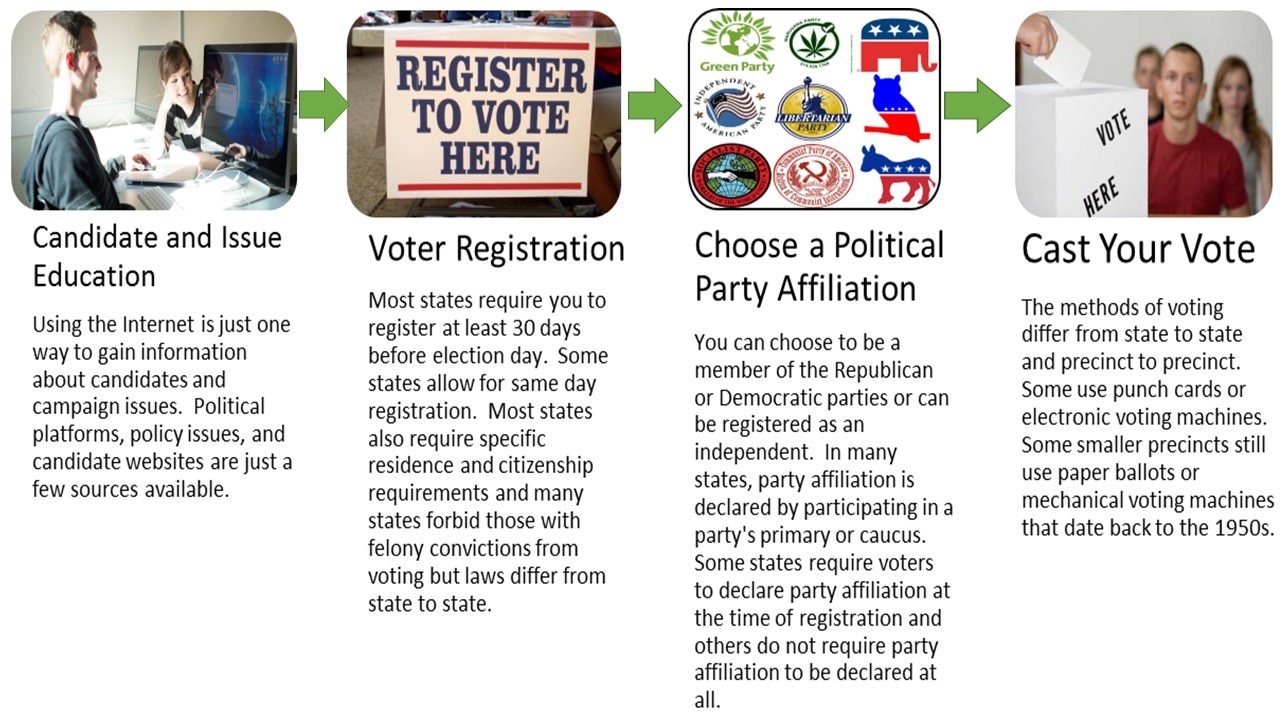
Voter Education
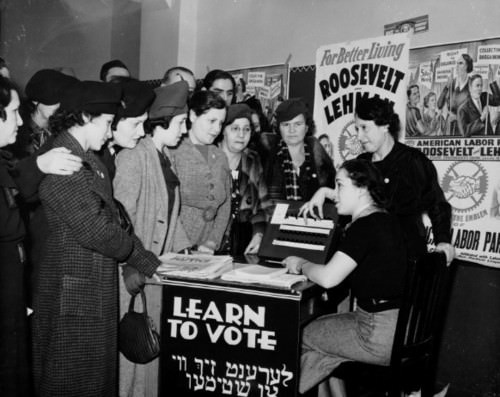
The first step in the voting process involves gathering information about candidates and their position on issues important to the voter. An “educated electorate” means that voters should be aware of each candidate’s experience, background information and the candidates’ stands on important issues. This knowledge is essential in helping voters select the best candidate from those who are listed on the ballot.
Question For Debate
The Founding Fathers believed that we needed a "well educated electorate" in order to guarantee democracy. But in their view, the average citizen did not meet that criterion. This is why they placed a firewall between the voters and the President (by way of the Electoral College). Recently, some politicos have promoted or debated the idea that people should be required to pass a basic civics in order to be able to vote. Of course, this would most likely not happen any time soon because of the use of such tests in the past in order to restrict the rights of minority voters.
First: Read the following article and watch the video that follows it.
The article can be found at Should Voters Have to Pass a Test Before Pulling the Lever
The videos can be found at Rachel Maddow: Racist History Embraced by Tea Party and Politician: Sometimes Not Everyone Should Vote
Do you think people should be required to demonstrate a basic knowledge of civics before voting? Defend your answer.
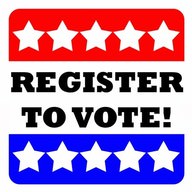
Voter Registration
Unlike many other democratic nations, the United States government places the responsibility of registering voters and conducting elections on the states rather than taking it on as a national responsibility or activity. While federal law and the United States Constitution places limits and requirements on the states, we still look to the states as the governmental institution that undertakes election activities. The United States is also very unique in that it places the responsibility for voter registration and participation
Specific voter registration requirements vary from state to state but most states require a minimum length of residency in the state, a minimum length of residency in the country, declaration of United States citizenship, and registration at least 30 days prior to the election. Some states allow for same day registration but many states limit the ability to vote for convicted felons or those in treatment or guardianship for severe mental health or competency issues. A major concern in many states has been the expansion of identification requirements in order to vote, as many minorities have claimed that identification requirements are specifically targeted towards limiting their ability to vote.
Since 1993, the Motor Voter Law has allowed for automatic voter registration for any eligible citizen at the time they obtain their drivers’ license. Some states also allow for same-day registration at the polls and others allow for online voter registration. When registering, citizens may be asked to declare political partisanship (which party they wish to associate themselves with). This information is required in many states before casting a vote in the primary elections. Citizens cannot be required to claim a party affiliation. If they do not affiliate themselves with a major party they will be automatically registered as “independents.”
Political Party Declaration
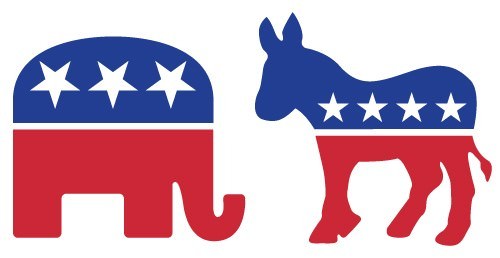
In many states, citizens may be required to declare their political party affiliation prior to participating in a primary or caucus. In these “closed” systems, a declaration must often be done at the time of registration. If the voter does not wish to declare a political party affiliation, he/she may be registered as an “independent.” In other states (like Texas), the voter declares a party affiliation at the time of the election. It is as simple as standing in a line for “Democrats” or “Republicans”. In other states, no party declaration is required and citizens may choose from a “blanket ballot” that does not separate the candidates by party and may vote on the candidate of their choice.
The Voting Process
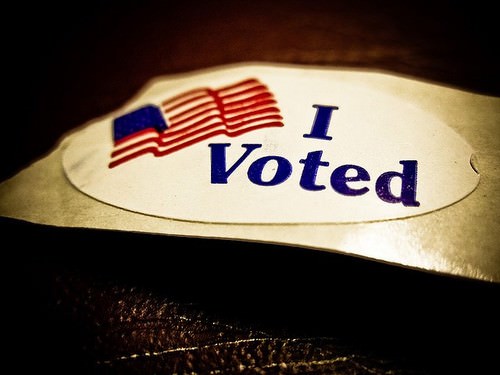
Just as in the case of voter registration, voting is an action that is regulated and administered by the individual states. In some states or smaller precincts, citizens may vote by marking a paper ballot. In other states, mechanical voting machines, paper punch cards, or (most frequently today) electronic voting systems may be used. Whatever system is used, it is important that the votes be accurately and efficiently tabulated and that every citizen who votes have an equal voice in government. For this purpose, every vote must have equal weight (one person one vote). The law requires that every district in a legislative body (other than the Senate) contain an equal number of citizens and that it be apportioned periodically based on the official U.S. Census.
Reapportionment and Redistricting
Reapportionment and Redistricting are activities that take place periodically based upon changes in population (as measured by the U.S. Census every ten years). Since populations change over time, certain cities, states or regions (such as Texas) may see large increases in their population that require the addition of new Congressional or state-level representative districts. Other states or regions may see equivalent decreases in population and require the removal of representative districts.
The process or adding or removing representative districts is called reapportionment. When district lines are changed, it requires a process called redistricting. This is the process of drawing new boundaries. Boundaries must create districts that are relatively equal in population and meet specific requirements of the Voting Rights Act which prohibits the drawing of districts in order to lessen the voting strength of minorities. When district lines are drawn in a way that gives advantage to one specific group or party or lessens the voting power of a specific group or political party we describe this as gerrymandering. Such practices may be deemed illegal if they are specifically targeted towards a specific minority.
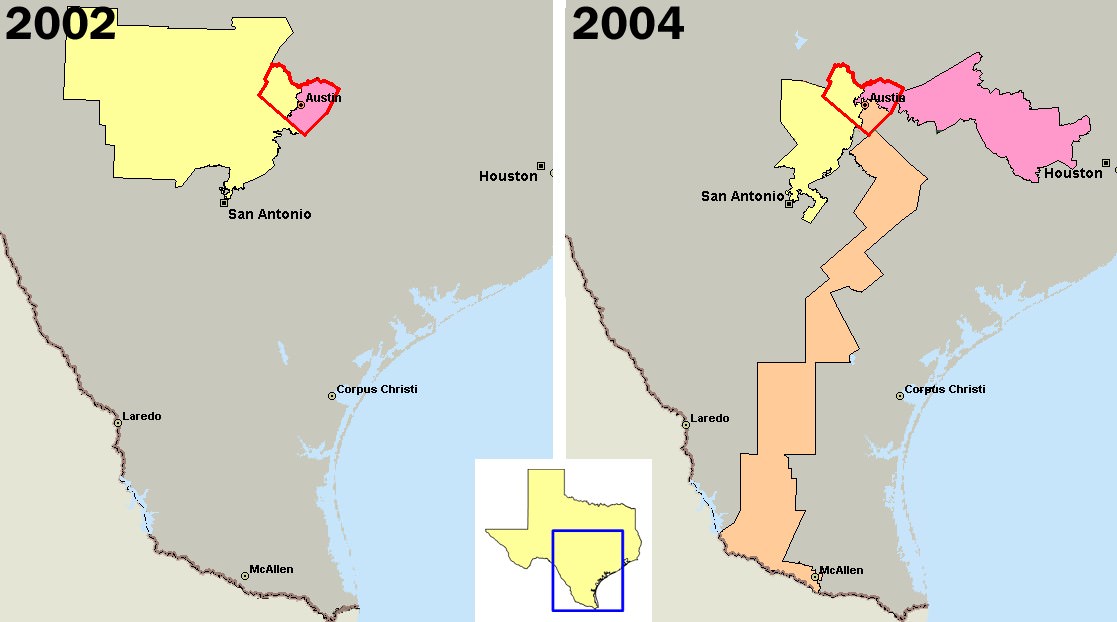
Election Day Campaigning
Election Day campaigning takes place in polling places all over the country. Candidates and their organizations (including volunteer supporters) can be seen at polling places and often approach voters before they enter the polls. For this reason, many states establish specific Election Day campaigning rules which are strictly enforced. In Texas, an electioneering perimeter is established around the polling place. No campaigning or electioneering is allowed within the boundaries of the election perimeter under penalty of law.
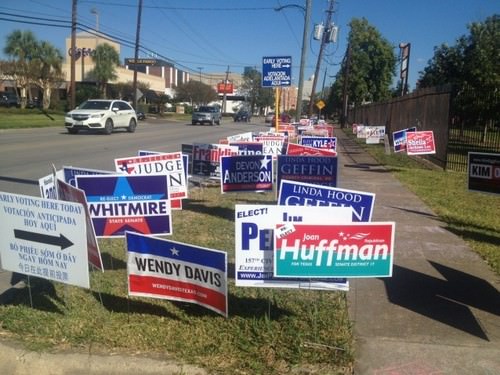
Election Day Activities
Candidates and campaign staff are always concerned about knowing three things before Election Day. These include:
- Where does the candidate have the strongest support (specific precincts and regions)?
- Where is support for the candidate’s opponent strongest?
- Where could voting go either way (swing areas)?
Depending upon the candidate’s research and campaign strategy, the campaign staff will concentrate their electioneering efforts in a variety of ways. One thing is for sure: candidates will campaign hardest in swing areas and in areas with the greatest amount of support. They will not “waste” their efforts attempting to convert voters who have already committed to supporting their opponent.
Efforts may include trying to get the candidate’s supporters to vote instead of staying home (GOTV or “Get Out The Vote” efforts), and having a heavy campaign presence in voting precincts and polling places where voters have not yet made up their minds before entering the polling place (swing areas).
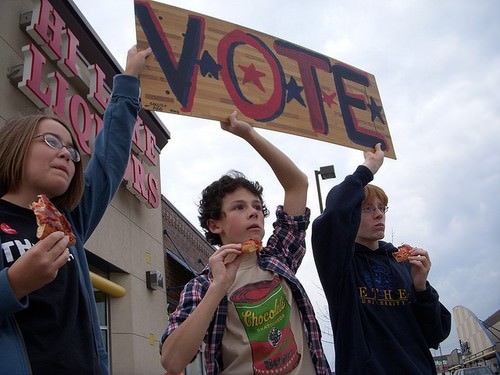
Getting Out The Vote (GOTV)
GOTV describes a set of strategies that are intended to make sure voters actually go to the polls. Much of a candidate’s efforts will be expended in this area on Election Day as it has the highest impact on the candidate’s success. These efforts may include heavy use of social media and telephone (including volunteer phone banks and “robo-calling”). In other areas, it may include door to door efforts within neighborhoods that have a large number of supporters. Other efforts may include arranging for transportation to the polls and assistance in getting registered and meeting legal voting requirements.
What Do You Think?
Read the article from MSNBC, State of the Union 2015
Do you think changes in Texas voting laws are a good thing or a bad thing for voter participation and engagement in Texas? Explain your answer.
For specific information on voting day law and procedure in Texas, go to:
www.sos.state.tx.us/elections/forms/election_judges_handbook.pdf
votetexas.gov/voting/where/
http://www.texas.gov/en/discover/Pages/voting.aspx
http://www.sos.state.tx.us/elections/pamphlets/largepamp.shtml
Ballots and Voting Methods
A ballot is a device used to cast votes in an election and may be a piece of paper or a small ball used in secret voting. Each voter uses one ballot, and ballots are not shared. In the simplest elections, a ballot may be a simple scrap of paper on which each voter writes in the name of a candidate, but governmental elections use pre-printed ballots to protect the secrecy of the votes. The voter casts his or her ballot in a box at a polling station. A ballot box is a temporarily sealed container, usually square box though sometimes a tamper resistant bag, with a narrow slot in the top sufficient to accept a ballot paper in an election. The ballot box is also designed to prevent anyone from accessing the votes cast until the close of the voting period.
The ballots used in elections have changed significantly in American history. Originally, political parties printed their own ballots, listing only their candidates. Voters took ballots from the party of their choice and deposited them in the ballot box within full view of other voters. As a result, vote choices were public. Since 1888, however, state governments have printed ballots that list all candidates for all offices. Votes are cast in secret. Because Australia was the first country to adopt the secret ballot, this ballot is called the Australian ballot.
Elections in the United States use one of two kinds of Australian ballots:
- The office-block ballot (also called the Massachusetts Ballot): Candidates are grouped by office.
- The party-column ballot (also called the Indiana Ballot): Candidates are grouped by party.
Political parties do not like office block ballots because these ballots encourage people to vote for candidates from different parties (a practice known as split-ticket voting). Instead, political parties prefer party-column ballots because these ballots make it easy to choose candidates only from a particular party. Some of these ballots even allow voters to choose all of a party’s candidates by checking a single box, or pulling a single lever, a practice called straight-ticket voting.
Partisan Battles over Ballots
Political parties tend to support whatever ballot helps them get the most votes. In the 1998 election, the Democratic Party in Illinois won big, in part because of a very effective campaign to get voters to vote straight-ticket Democrat. After the election, Republicans in the Illinois state legislature sought to forbid those ballots with a single box, which allowed a straight-ticket vote.
Americans vote using a wide variety of machines. These may include “old fashioned” mechanical voting machines, punch-card and stylus systems and the newer, more advanced electronic touch screen voting systems.
- Mechanical voting machines: Voters flip switches to choose candidates and then pull a lever to finalize their vote.
- Punch-card machines: Voters mark their choices on a card using a pencil and then deposit their cards into a machine, which then tallies the vote based on the card’s holes.
- Touch-screen machines: Similar to ATMs, these increasingly popular machines “read” the voters’ choices.
But these methods have serious problems. Mechanical voting machines frequently break down, but many of the companies that made the machines have gone out of business. Punch-card machines are fallible because punching does not always create a complete hole (leading to debates about hanging and pregnant chads, as in the 2000 presidential elections). Many computer security experts see touch-screen voting as dangerously insecure. Others point out that most touch-screen machines leave no paper documents, a huge problem in cases of recounts.
Florida 2000
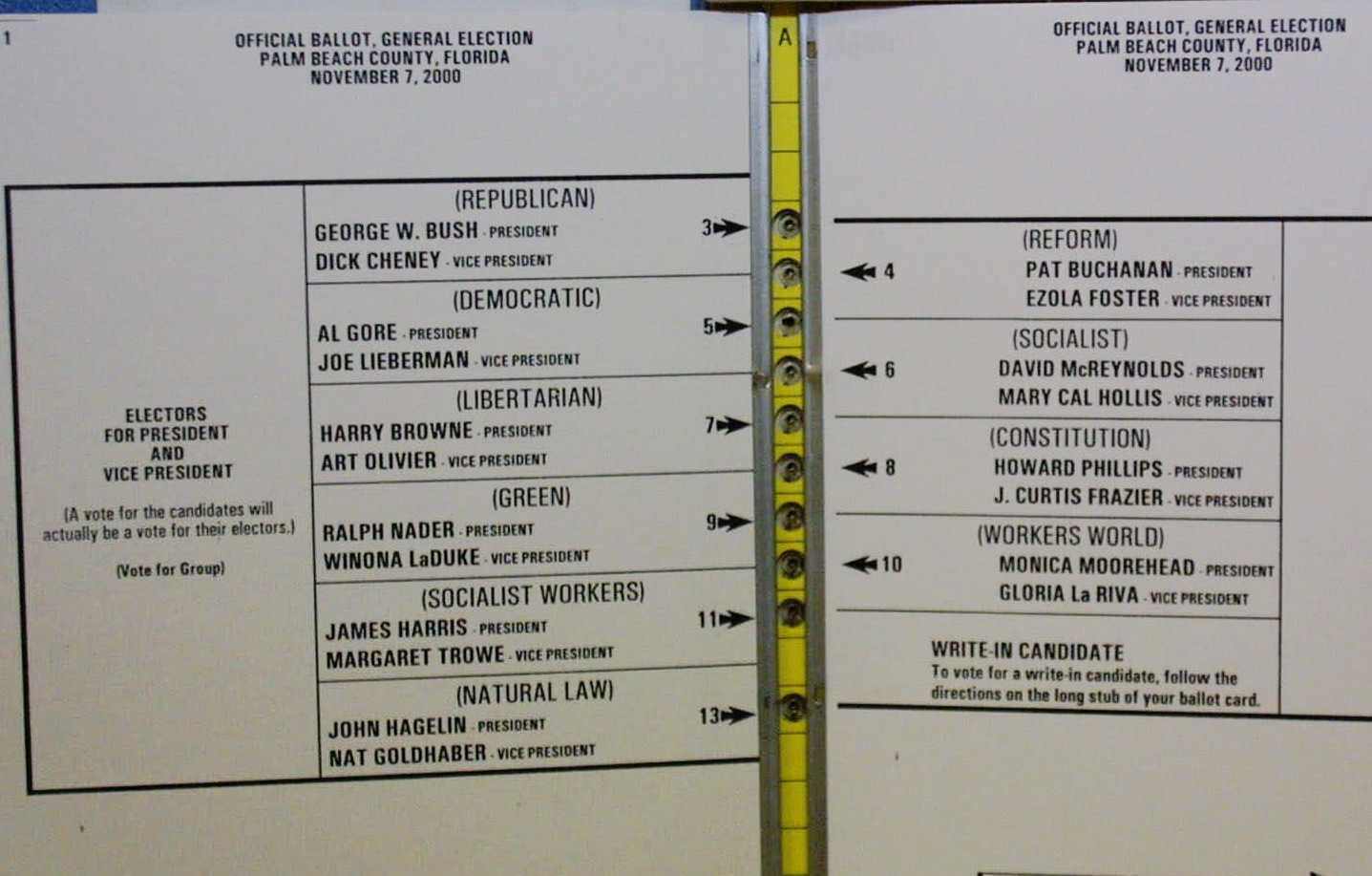
The 2000 election in Florida and other states was shocking because of the inconsistency and imprecision of voting in many jurisdictions. Even within a single state, precincts use a wide variety of voting machines. And jurisdictions often have very different rules for counting votes and holding recounts. After the 2000 election, many wanted to standardize voting, but so far little has been done for one major reason: cost. Purchasing the same voting machines for all precincts would be prohibitively expensive.
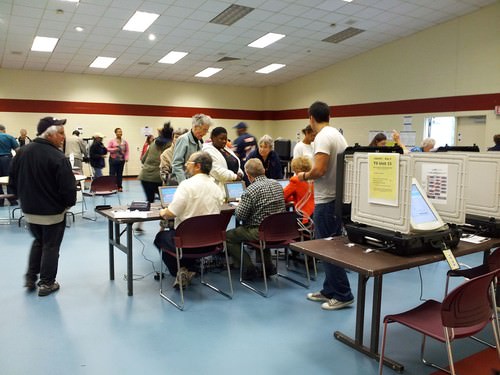
Early Voting Differs by State
Traditionally, people vote by filling out a ballot at their local polling precinct or voting center. But some voters, such as college students or people serving in the military, cannot get to their polling place to vote. The states allow these voters to use absentee ballots. Absentee voters usually receive their ballots in the mail several weeks before the election, fill them out, and mail them back to state election officials.
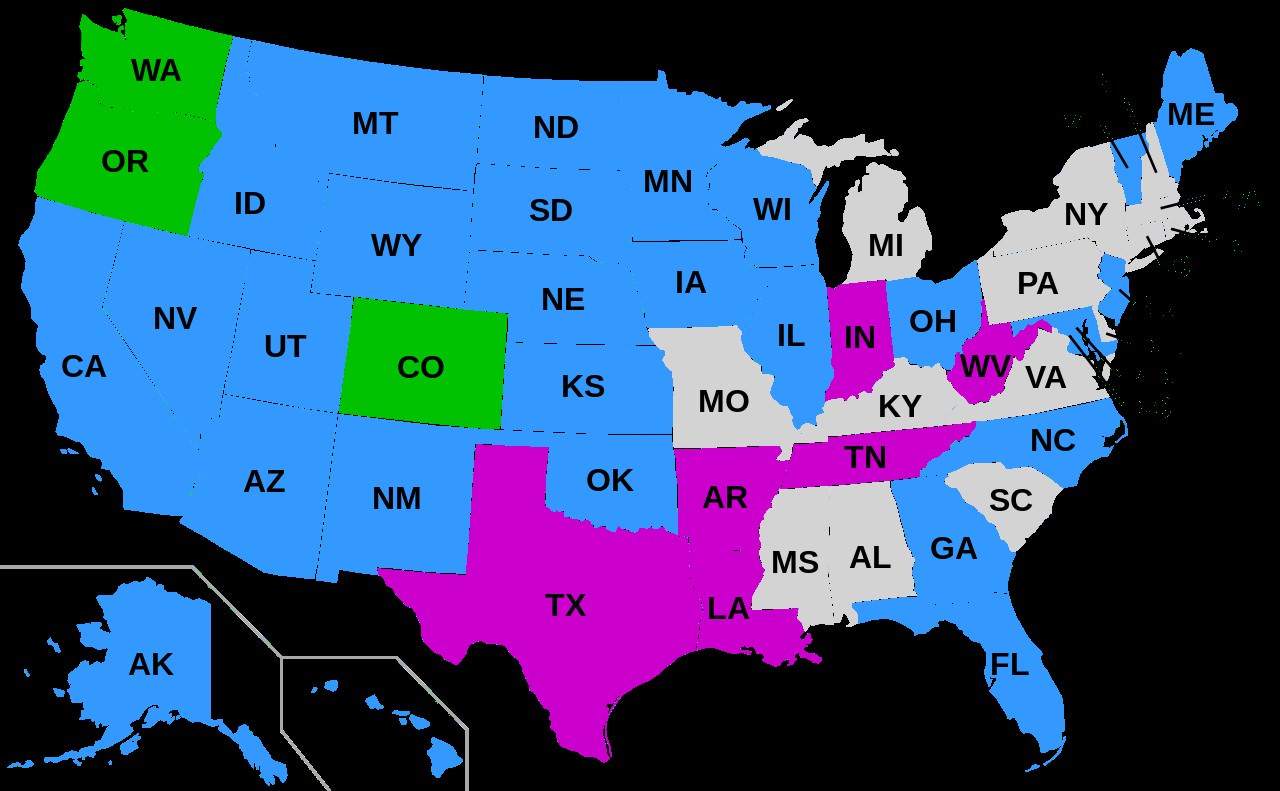
Source: http://www.adamheckler.com/wordpress/wp-content/uploads/2015/02/no-excuse-early- voting-by-state.png credited as Creative Commons Public Domain
Absentee and Early Voting
Most states have a method for any eligible voter to cast a ballot before Election Day, either during the early voting period or by requesting an absentee ballot. In 14 states, early voting is not available and an excuse is required to request an absentee ballot.
States offer three ways for voters to cast a ballot before Election Day:
- Early Voting: In 33 states and the District of Columbia, any qualified voter may cast a ballot in person during a designated period prior to Election Day. No excuse or justification is required.
- Absentee Voting: All states will mail an absentee ballot to certain voters who request one. The voter may return the ballot by mail or in person. In 20 states, an excuse is required, while 27 states and the District of Columbia permit any qualified voter to vote absentee without offering an excuse. Some states offer a permanent absentee ballot list: once a voter asks to be added to the list, s/he will automatically receive an absentee ballot for all future elections.
- Mail Voting: A ballot is automatically mailed to every eligible voter (no request or application is necessary), and the state does not use traditional precinct poll sites that offer in-person voting on Election Day. Three states use mail voting.
-
- Usually states have provided absentee ballots to those who had good reasons for not being able to go their polling place. In recent years, though, some states have made it easy for anyone to vote by mail, in an effort to encourage voting. In 2000, for example, Oregon allowed all voters in the presidential election to mail in their ballots. Voter participation surpassed 80 percent, a remarkable number. Due to this success, Oregon has completely abandoned precinct voting.
- But voting by mail has its critics. These people argue that voting by mail allows people to make their final choice early in the campaign, before debates or other events that could substantially change the race. Still, others feel that voting in person at precincts builds a sense of civic-mindedness, which is not possible through voting by mail. Supporters of voting by mail argue that the increased turnout outweighs these criticisms.
Early Voting:
-
- Two-thirds of the states--33, plus the District of Columbia--offer some sort of early voting. Early voting allows voters to visit an election official’s office or, in some states, other satellite voting locations, and cast a vote in person without offering an excuse for why the voter is unable to vote on election day. Some states also allow voters to receive, fill out and cast their absentee ballot in person at the elections office or at a satellite location rather than returning it through through the mail. This is often referred to as in-person absentee voting. Satellite voting locations vary by state and may include other county and state offices (besides the election official’s office), grocery stores, shopping malls, schools, libraries, and other locations.
- The time period for early voting varies from state to state:
- The date on which early voting begins may be as early as 45 days before the election, or as late as the Friday before the election. The average starting time for early voting across all 33 states is 22 days before the election.
- Early voting typically ends just a few days before Election Day: seven days before the election in two states, on the Thursday before the election in one state, the Friday before in seven states, the Saturday before in seven states, and the Monday before Election Day in 13 states.
- Early voting periods range in length from four days to 45 days; the average across all 33 states is 19 days.
- Of the states that allow early in-person voting, 22 and the District of Columbia allow some weekend early voting. This includes Massachusetts, which passed legislation in 2014 (to be implemented in 2016) allowing local and county clerks the discretion to expand early voting hours to weekends.
- Saturday: 18 states + the District of Columbia provide for voting on Saturday. 4 additional states (California, Kansas, Vermont, and Massachusetts, starting in 2016) leave it up to county clerks who may choose to allow Saturday voting.
- Sunday: 4 states (Alaska, Illinois, Ohio, and Maryland) allow for Sunday voting. 5 states (California, Florida, Georgia, Nevada, and Massachusetts, starting in 2016) leave it up to county clerks who may choose to be open on Sundays.
No-Excuse Absentee/Early Voting
-
- Absentee voting is conducted by mail-in paper ballot prior to the day of the election. States typically require that a voter fill out an application to receive an absentee ballot. Many states help facilitate this process by making absentee ballot applications available online for voters to print and send, and five states (Florida, Louisiana, Maryland, Minnesota, and Utah) permit a voter to submit an application entirely online. Arizona has some counties that have online absentee ballot applications, and in Detroit, Michigan voters can request an absentee ballot through a smartphone app.
- While all states offer some version of absentee voting, there is quite a lot of variation in states’ procedures. For instance, some states offer "no-excuse" absentee voting, allowing any registered voter to request an absentee without requiring that the voter state a reason for his/her desire to vote absentee. Some states also allow a time frame before the election for voters to appear at the elections office or other designated location in person to request, fill out and cast an absentee ballot in on the spot. Still, other states permit voters to vote absentee only under a limited set of circumstances.
Online Voting?
-
- Many people think the future of voting is on the Internet, which would allow people to vote as easily and quickly as they send an email. Some states have experimented with online voting. Critics fear that online voting has the potential to compromise the secret ballot or to encourage voter fraud, and so online voting remains in its experimental stages.
Boundless. “Types of Ballots.” Boundless Political Science. Boundless, 02 Jul. 2014. Retrieved 29 March 2015 from https://www.boundless.com/political-science/textbooks/boundl ess-political-science-textbook/campaigns-and-elections-8/elections-60/types-of-ballots-342 -715/Sources:
The Election Process. http://www.sparknotes.com/us-government-and-politics/american-govern ment/the-political-process/section1.rhtml accessed March 28, 2015.
National Council of State Legislators. “Absentee and Early Voting.”. 11 Feb. 2015. Retrieved March 28, 2015 from http://www.ncsl.org/research/elections-and-campaigns/absentee-and-earl y-voting.aspx.

